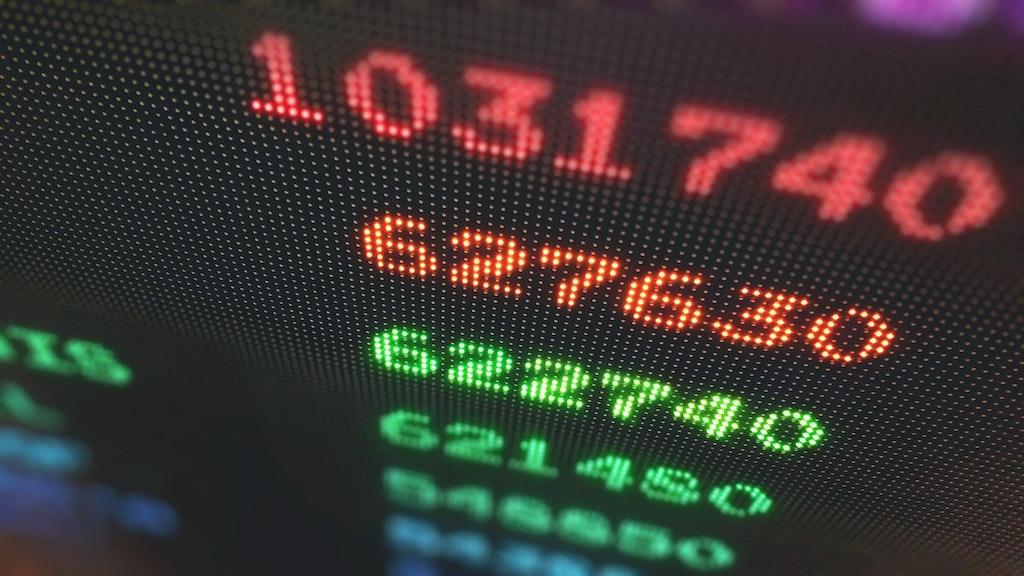The high-stakes game of financial market trading is no easy task to master. It’s akin to navigating a maze where the walls continually shift and the end goal fluctuates with the changing tide of global economies. What’s the compass that can aid one through this labyrinth? The answer lies with Technical Analysis, an ally to the traders whose purpose is to decode the narrative written in historical market data to predict the future.
Let us delve deeper into the intricate world of Technical Analysis.
Technical Analysis, in its essence, is a well-oiled machine fueled by the power of evaluation and forecasting. Like a stethoscope to a doctor, it is an indispensable tool for a trader, probing the financial health of securities by decoding historical data patterns. These data patterns offer a glimpse into the potential movements of a security’s price, akin to how a crystal ball might reveal glimpses of the future.
Contrasting this, we have the Fundamental Analysis. It’s like a seasoned private investigator, scrutinizing a company’s financial stability, management prowess, and susceptibility to economic factors to identify its true intrinsic value. Although both analyses co-exist in the trading world, their roles and methods are starkly different.
Technical Analysis moves to the rhythm of the markets, eyes trained for patterns and trends lurking within data. This ability to perceive patterns is not just an art but a pivotal strategy that could pave the path for successful investments. In the digital age, various tools have been developed to aid in this pattern hunting expedition, among them are data charts that visually manifest the raw data into comprehensible visual guides.
Just as a ship benefits from its sturdy anchor, traders find their grounding with Technical Analysis. It offers several anchors to help them weather the volatile storms of trading:
- Pattern recognition: Technical Analysis guides traders through the dense jungle of market data, allowing them to spot trends and patterns. These patterns, like footsteps in the sand, help traders trace the course of a security’s price and act accordingly.
- Mastering the dance of entry and exit: By identifying key support levels on a chart, a trader can precisely time their entry and exit from a market. This skill is akin to a choreographed dance, moving in perfect harmony with the beat of the market.
- Risk versus reward: Technical Analysis serves as a trader’s risk radar. By using strategies like stop-loss orders, traders can limit their losses, while the analysis of potential return equips them with foresight on their potential gains.
- The guiding compass: Technical Analysis clears the fog of market data, helping traders focus on the important trends. This insight streamlines their decision-making process, turning a complex challenge into a navigable path.
Technical Analysis employs an array of techniques, each a unique tool in a trader’s arsenal. These techniques range from Moving Averages, which smoothen price movements to reveal trends, to the Relative Strength Index (RSI) that assesses whether a security is overbought or oversold. Others include Bollinger Bands that identify trading opportunities through volatility, Fibonacci retracements for support and resistance identification, and Candlestick charts, which serve as a visual storybook of price movements over time.
With these tools in hand, traders can enact a variety of strategies. Some traders adopt the approach of a surfer, riding the waves of market trends through Trend Following. Others employ Mean Reversion, treating the market as a giant rubber band, waiting to snap back when stretched too far. There are also those who play the waiting game in Breakout Trading, keeping a keen eye on support and resistance levels. Strategies like Swing Trading and Position Trading adjust the time frame of holding positions, further diversifying the strategic spectrum.
Despite its prowess, Technical Analysis isn’t without its flaws. It’s a subjective science, with different interpretations leading to varying decisions. Its reliance on historical data can sometimes be its Achilles’ heel, especially when market conditions transform rapidly. At times, false signals might lead traders astray, and not all tools and techniques perform efficiently under all conditions.
In conclusion, Technical Analysis, while a potent weapon, isn’t an all-powerful one. Its strengths and weaknesses need to be recognized and accounted for. It’s a tool best used in conjunction with other strategies, such as Fundamental Analysis, to develop a comprehensive trading approach. By creating a strategic blend, traders can elevate their success chances in the unpredictable realm of financial markets.
Conclusively, the game of financial market trading is a daunting expedition. Navigating this maze requires skill, tenacity, and a reliable compass. Herein enters Technical Analysis, an indispensable navigational aid for traders that decodes the narrative scripted in the past to illuminate the pathway to the future.
At its core, Technical Analysis is a powerful apparatus that utilizes the power of historical data to anticipate future market behavior. It functions as a trader’s stethoscope, gauging the vitality of securities by translating past patterns into probable future trends, just as a crystal ball might prophesize what lies ahead.
In contrast to this, we have Fundamental Analysis, which plays detective, diligently inspecting a company’s financial health, the effectiveness of its management, and its responsiveness to economic factors. Though these two analyses exist side-by-side in the world of trading, their modus operandi differ considerably.
Technical Analysis dances to the rhythm of the markets. It is a form of artistry and strategy that enables the spotting of patterns and trends within data. Numerous tools have been developed to support this endeavor, with data charts transforming raw data into easily interpreted visual aids.
Technical Analysis provides the grounding needed to navigate the tumultuous seas of trading. It does so by helping traders identify patterns within the dense forest of market data, timing their market entry and exit with precision, and managing their risk-reward dynamics. Technical Analysis cuts through the fog of market data, providing clarity on key trends and aiding traders in their decision-making journey.
There are several tools and techniques at the disposal of traders practicing Technical Analysis. Among these are Moving Averages, which smooth out price fluctuations to expose trends, the Relative Strength Index (RSI) to gauge if a security is overbought or oversold, Bollinger Bands to pinpoint trading opportunities through volatility, and Candlestick charts that depict price fluctuations over time like a visual diary. With these techniques, traders can implement a wide array of strategies to align with the market’s heartbeat.
However, it is critical to recognize that Technical Analysis, like any potent tool, is not flawless. It is a subjective science where differing interpretations can lead to varying outcomes. Its heavy reliance on historical data could be its downfall in rapidly shifting market conditions. False signals might mislead traders, and not every tool works efficiently in all scenarios.
To wrap up, Technical Analysis, though a formidable ally, is not invincible. Its strength and limitations should be understood and factored into any trading strategy. It works best when coupled with other strategies, such as Fundamental Analysis, to create a holistic approach to trading. By blending different strategies, traders can bolster their chances of success in the unpredictable world of financial markets.
This conclusion thus serves as a reminder that the world of trading is a challenging labyrinth, but it is also a realm of immense opportunities. With the right tools, like Technical Analysis, and a comprehensive approach, traders can better navigate this complex universe. After all, the journey in the financial markets is not just about surviving; it’s about thriving. The key to navigating this labyrinth lies not just in understanding its complexity, but also in harnessing its opportunities for growth and advancement.
So here’s to a successful voyage in the exciting world of trading. Happy investing!
FAQ
What is Technical Analysis and how does it aid traders in financial market trading?
Technical Analysis is a critical tool in financial trading that helps traders evaluate and forecast market trends by analyzing historical data patterns. It provides insight into potential price movements, offering traders a strategic advantage in navigating the complex and fluctuating financial markets.
How does Technical Analysis differ from Fundamental Analysis in the context of trading?
While both analyses co-exist in the trading world, their roles and methodologies vary significantly. Technical Analysis primarily focuses on the study of market patterns and trends based on historical data, whereas Fundamental Analysis scrutinizes a company’s financial stability, management effectiveness, and susceptibility to economic factors to identify its true intrinsic value.
What are some of the key tools and techniques employed in Technical Analysis?
There’s a diverse array of tools and techniques in Technical Analysis. Some include Moving Averages, which help reveal trends by smoothing price movements; the Relative Strength Index (RSI) for assessing whether a security is overbought or oversold; Bollinger Bands for identifying trading opportunities via volatility; and Candlestick charts for visual representation of price movements over time.
Are there any limitations or downsides to Technical Analysis?
Yes, despite its advantages, Technical Analysis has limitations. It’s a subjective science where different interpretations can lead to different decisions. Its heavy reliance on historical data could be problematic in rapidly shifting market conditions. Also, it can sometimes produce false signals, misleading traders. Moreover, not all tools and techniques are efficient under all conditions.
How can traders maximize the benefits of Technical Analysis in their trading strategy?
To maximize its benefits, Technical Analysis should be used in conjunction with other strategies, such as Fundamental Analysis, to develop a comprehensive trading approach. Recognizing its strengths and weaknesses, and adjusting trading strategies accordingly, can help traders navigate the volatile financial markets more successfully.

